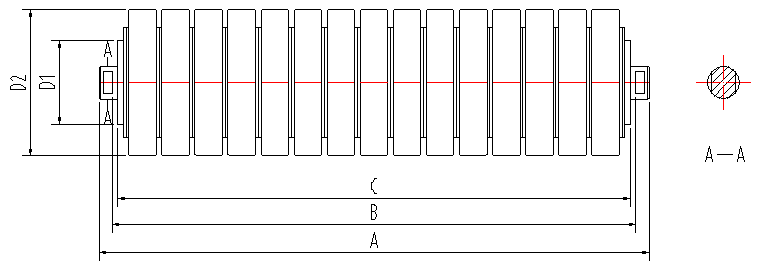 Afrikaans
Afrikaans  Albanian
Albanian  Amharic
Amharic  Arabic
Arabic  Armenian
Armenian  Azerbaijani
Azerbaijani  Basque
Basque  Belarusian
Belarusian  Bengali
Bengali  Bosnian
Bosnian  Bulgarian
Bulgarian  Catalan
Catalan  Cebuano
Cebuano  Corsican
Corsican  Croatian
Croatian  Czech
Czech  Danish
Danish  Dutch
Dutch  English
English  Esperanto
Esperanto  Estonian
Estonian  Finnish
Finnish  French
French  Frisian
Frisian  Galician
Galician  Georgian
Georgian  German
German  Greek
Greek  Gujarati
Gujarati  Haitian Creole
Haitian Creole  hausa
hausa  hawaiian
hawaiian  Hebrew
Hebrew  Hindi
Hindi  Miao
Miao  Hungarian
Hungarian  Icelandic
Icelandic  igbo
igbo  Indonesian
Indonesian  irish
irish  Italian
Italian  Japanese
Japanese  Javanese
Javanese  Kannada
Kannada  kazakh
kazakh  Khmer
Khmer  Rwandese
Rwandese  Korean
Korean  Kurdish
Kurdish  Kyrgyz
Kyrgyz  Lao
Lao  Latin
Latin  Latvian
Latvian  Lithuanian
Lithuanian  Luxembourgish
Luxembourgish  Macedonian
Macedonian  Malgashi
Malgashi  Malay
Malay  Malayalam
Malayalam  Maltese
Maltese  Maori
Maori  Marathi
Marathi  Mongolian
Mongolian  Myanmar
Myanmar  Nepali
Nepali  Norwegian
Norwegian  Norwegian
Norwegian  Occitan
Occitan  Pashto
Pashto  Persian
Persian  Polish
Polish  Portuguese
Portuguese  Punjabi
Punjabi  Romanian
Romanian  Russian
Russian  Samoan
Samoan  Scottish Gaelic
Scottish Gaelic  Serbian
Serbian  Sesotho
Sesotho  Shona
Shona  Sindhi
Sindhi  Sinhala
Sinhala  Slovak
Slovak  Slovenian
Slovenian  Somali
Somali  Spanish
Spanish  Sundanese
Sundanese  Swahili
Swahili  Swedish
Swedish  Tagalog
Tagalog  Tajik
Tajik  Tamil
Tamil  Tatar
Tatar  Telugu
Telugu  Thai
Thai  Turkish
Turkish  Turkmen
Turkmen  Ukrainian
Ukrainian  Urdu
Urdu  Uighur
Uighur  Uzbek
Uzbek  Vietnamese
Vietnamese  Welsh
Welsh  Bantu
Bantu  Yiddish
Yiddish  Yoruba
Yoruba  Zulu
Zulu conveyor belt pulley types
Understanding Conveyor Belt Pulley Types
Conveyor belts play a crucial role in various industries, facilitating the efficient movement of goods and materials. One of the key components of a conveyor system is the pulley. Pulleys are essential as they guide the belt and provide the necessary tension to prevent slippage. Understanding the different types of conveyor belt pulleys can help in selecting the right equipment for specific applications, enhancing overall operational efficiency.
Types of Conveyor Belt Pulleys
1. Drive Pulley This is perhaps the most critical type of pulley in a conveyor system. The drive pulley is powered by a motor and is responsible for moving the conveyor belt. It is usually located at the head of the conveyor and can be either a delayed or a high-tension drive configuration. The materials used for drive pulleys often include steel or rubber to ensure durability.
2. Idler Pulley Positioned along the conveyor belt, idler pulleys support the belt and help maintain its alignment. They do not drive the belt but are essential for reducing friction and wear. Idler pulleys can be either plain or grooved. Grooved idlers can help in tracking the belt more effectively, making them ideal for applications where belt misalignment is a concern.
3. Return Pulley Located at the tail end of the conveyor system, the return pulley serves to guide the belt back to the drive pulley after the material has been offloaded. This pulley is generally not driven but is crucial for maintaining belt tension and alignment.
conveyor belt pulley types

4. Take-Up Pulley This type of pulley helps in adjusting the tension of the conveyor belt. It is typically positioned at one end of the conveyor system and allows for the easy addition or removal of belt length. Proper tension is vital for the efficient operation of the conveyor system and helps prevent slippage.
5. Snub Pulley A snub pulley is used to change the direction of the belt and provide additional tension where needed. It is often found in configurations where the belt must navigate around obstacles or other components of the machinery.
6. Wing Pulley Designed primarily for bulk material handling, wing pulleys feature a unique design that helps reduce material build-up and provides better belt traction. The wings allow for easier cleaning and better performance in abrasive environments.
Conclusion
Understanding the types of conveyor belt pulleys is essential for optimizing conveyor systems across various industries, from manufacturing to logistics. By selecting the appropriate pulley type based on the conveyor’s design and the materials being transported, businesses can enhance efficiency, minimize downtime, and prolong equipment lifespan. Careful consideration of each pulley's role will lead to a more effective and reliable conveyor system, ensuring smooth operations and productivity in the workplace.
-
Revolutionizing Conveyor Reliability with Advanced Rubber Lagging PulleysNewsJul.22,2025
-
Powering Precision and Durability with Expert Manufacturers of Conveyor ComponentsNewsJul.22,2025
-
Optimizing Conveyor Systems with Advanced Conveyor AccessoriesNewsJul.22,2025
-
Maximize Conveyor Efficiency with Quality Conveyor Idler PulleysNewsJul.22,2025
-
Future-Proof Your Conveyor System with High-Performance Polyurethane RollerNewsJul.22,2025
-
Driving Efficiency Forward with Quality Idlers and RollersNewsJul.22,2025





























